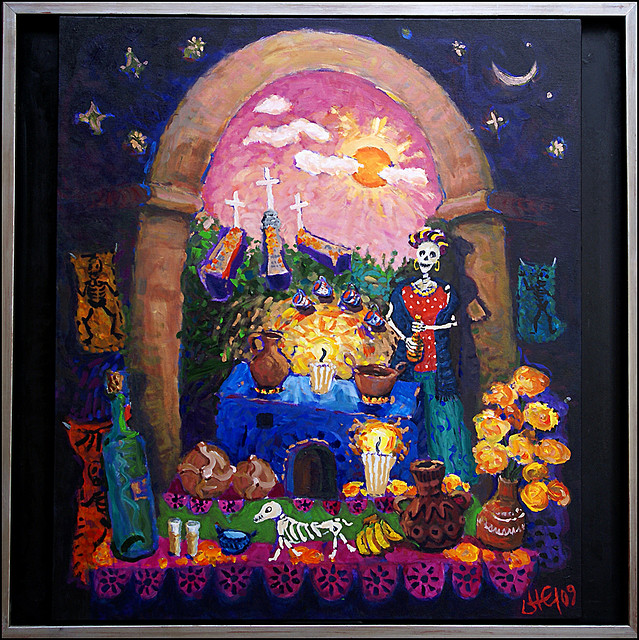In May of this year I found myself in Sayulita, Mexico with one of the greatest loves of my life.
On one of our last nights there we walked down the dirt road to our casita. Suddenly we heard the blare of a mariachi band behind us.
As we turned and looked, we saw what appeared to be the whole village walking towards us—several hundred locals, some in tears, some with their heads hanging, others smiling. In the middle of the crowd of people was a group of men carrying a very basic wooden coffin.
We stood watching as the procession grew closer; the men carrying the coffin took a sharp right hand turn towards the beach, while everyone else kept walking towards us and up and over the hill to Muertos Beach. The men carrying the coffin walked across the beach and gently placed the coffin on a small boat and pushed it out. The boat went out an around the inlet to Muertos Beach.
The event left us both contemplating the symbolism, the magnitude, even wondering who the deceased person was and what their life had encompassed. The symbolism of the boat going out to sea was powerful, considering the person might have spent time as a fisherman, as was the symbolism of life (and, in this case, death) returning home to the great Mother Ocean.
Fast forward from May to October, and the relationship that felt like the potential love of my life is over. In the Mexian Dia de los Muertos, or Day of the Dead, people’s spirits are celebrated and prayers are said to help them safely travel on to their next journey. In the Tibetan Buddhist teachings, death represents the impermanence in life.
Reflecting back on the past year in a soulful, albeit short-lived relationship, remembering the symbolism of Dia de los Muertos and learning more about the Buddhist perception of death, I realize that we are all connected, and I recognize the impermanence in our lives.
In the death of the relationship that I was in, though I will always hold a profound love for this person, I had to let go.
I learned a lot and carry all the happy memories we ever shared. I have made an altar with a photo of us in happier times, lit a candle and spent time breathing in the good things we shared and breathing out the stale energy of things that didn’t work so well. Through this process, I am enabling and encouraging healing; I am offering light to come into my life while releasing and letting go.
Our lives are a journey, and we continue to unite and connect with people at different times; they all have something to teach us. Remember to share each moment in each day with awareness—as if it could be your last. Make it count, and remember those who have walked before you and have since passed on.
Our spiritual practice through meditation is the only thing that can ultimately prepare us for death.
Our practice will allow us to open completely without an attachment to worldly concerns. The end of a relationship is like death, and we must allow ourselves to grieve and heal. Meditation allows us to create space to observe samsara (suffering) and be able to hold space in times of heartache or anguish.
The Buddha taught that much of our suffering comes from our attachment to things, whether subjective or objective in nature. It is better to release and detach from things that are no longer serving us in a healthy way, and thus letting go can be similar to a death in that it ends a particular kind of connection with someone we will no longer have.
Make a ritual of it, build a tiny altar, celebrate what that person brought to your life and let go of the rest.
Like the funeral we witnessed in Sayulita, it is best to recognize the beauty in returning to the forces that brought us here (like Mother ocean) and to celebrate our non-attachment.
~
Relephant Read:
Contemplating Death, Celebrating Life.
What Day of the Dead Means to Me.
~
Author: Peter DeHaas
Editor: Toby Israel
Photo: Ute/Flickr // Jordan Chan/Flickr
~
 Share on bsky
Share on bsky






Read 6 comments and reply